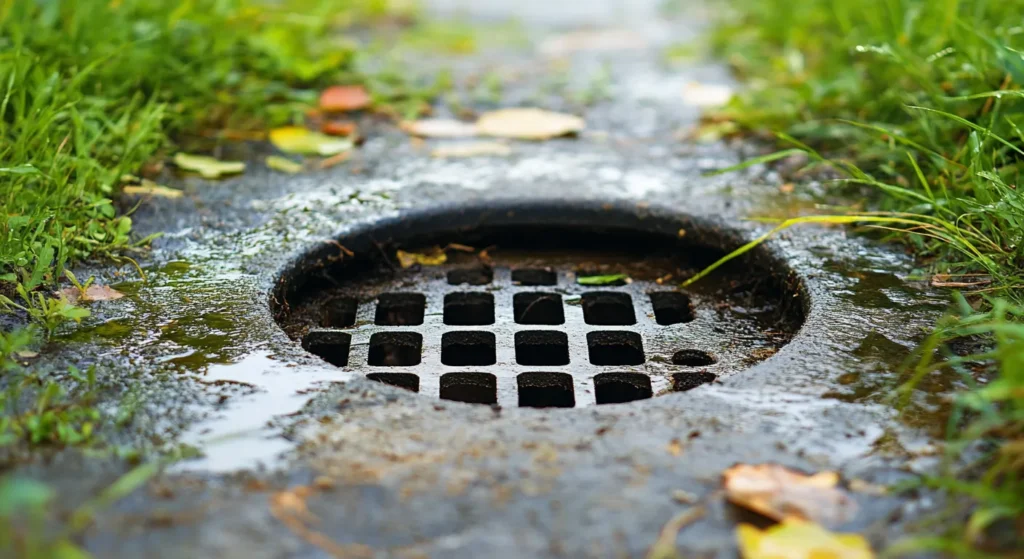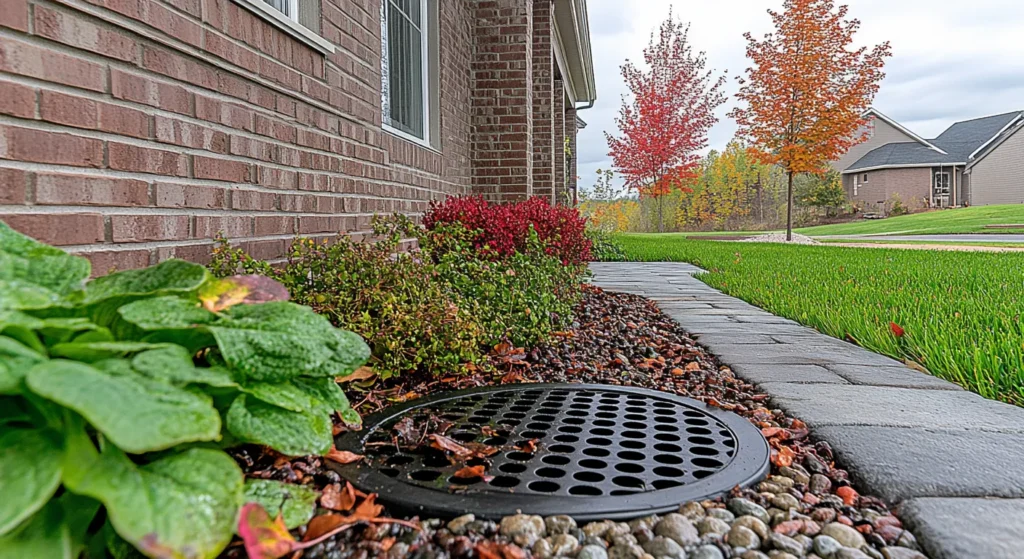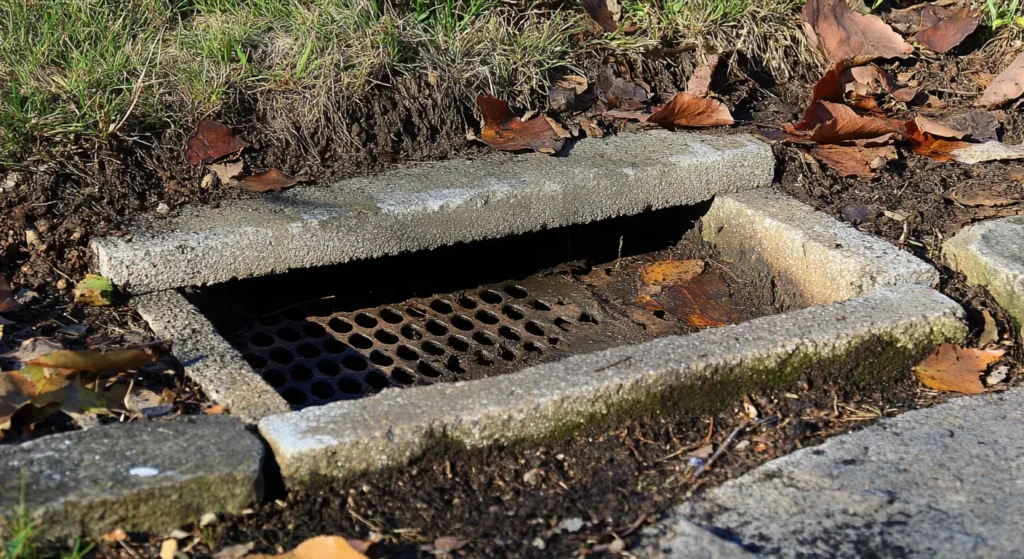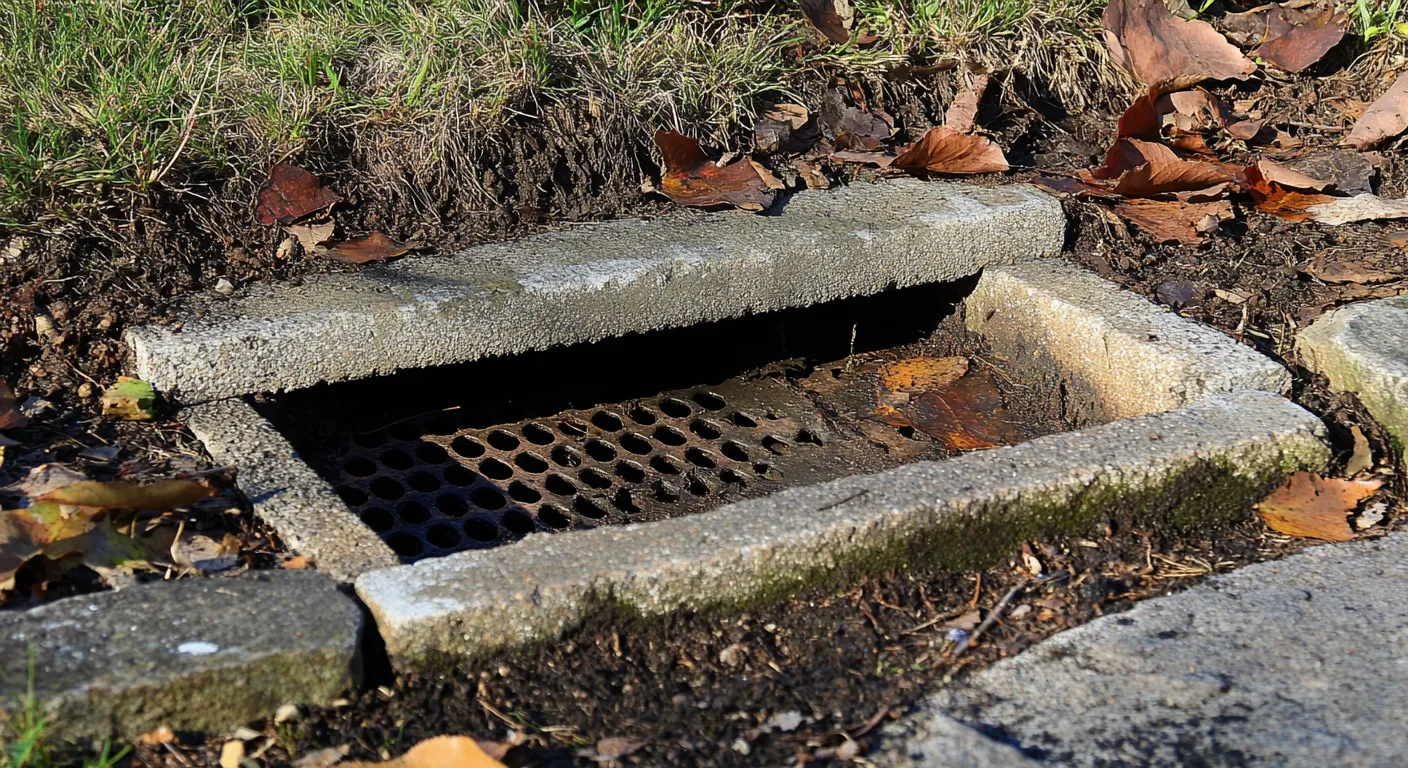One of the first things to consider when troubleshooting your gutter system is what happens to the water after it leaves the downspout. In-ground gutter drains play a vital role in directing water away from your home’s foundation to the sewer line. However, when clogged, these underground systems can lead to a cascade of problems, including water damage and compromised structural integrity. This comprehensive homeowner’s guide will explore the telltale signs of water damage, common causes of clogged in-ground gutter drains, and effective solutions to keep your drainage system functioning optimally. If you’re looking for professional help with your roofing system, consider contacting MY Pittsburgh Gutters for expert assistance.
Identifying Signs of a Clogged In-Ground Gutter Drain
Water pooling around the foundation and gutter overflow during rainfall are common signs of a clogged in-ground gutter drain. The first place to investigate these issues is to check for blockage in the drain system, requiring attention to prevent further damage. Pay attention to these indicators to address clogs promptly and avoid potential water damage and structural issues.

Water Pooling Around the Foundation
A clear indicator of a clogged underground gutter drain is water pooling around your home’s foundation. This standing water poses a significant threat to the structural integrity of your property. When water accumulates around the foundation, it can leak into the surrounding soil, leading to expansion and contraction.
This constant fluctuation in moisture levels weakens the foundation over time, potentially causing cracks, settlement, and even basement flooding. Furthermore, the presence of excess moisture creates a breeding ground for mold and mildew, which can lead to health hazards and unpleasant musty odors within your home. Addressing a clogged underground gutter drain quickly can mitigate these risks and safeguard your property from costly repairs.
Contact UsGutter Overflow During Rainfall
During heavy rain, if you notice water overflowing from your gutters instead of flowing through them, it indicates a clog in your in-ground gutter drain. This overflow can lead to water damage to your property and foundation. To address this issue effectively, consider implementing solutions such as professional drain snaking or installing gutter guards and downspout filters to prevent future blockages. Taking prompt action can help maintain the functionality of your roofing system and prevent costly repairs in the long run.
Causes of In-Ground Gutter Drain Clogs
Understanding the causes of in-ground gutter drain clogs can help homeowners implement preventative measures and avoid future drainage problems. Various factors contribute to these blockages, ranging from environmental elements to installation issues.
Common culprits include the accumulation of leaves, twigs, and other organic material that find their way into the drainage system. Over time, this debris can accumulate and create stubborn clogs that disrupt the water flow.

Accumulation of Leaves and Debris
During the year, leaves and debris can accumulate in your underground gutter drain, causing a blockage. This organic material gets washed into the gutter system, eventually reaching the underground drain pipe. Over time, the build-up of leaves and debris can restrict the flow of water, leading to a clogged underground drain. To prevent this, regular maintenance and cleaning are essential to ensure the efficient functioning of your drainage.
Improper Installation or Damaged Gutters
While the accumulation of debris is a common culprit for clogged in-ground gutter drains, improper installation or damaged gutters can also play a significant role. If the initial installation was not performed correctly, the drainage system may have inherent flaws that make it susceptible to clogging.
For instance, improper sloping or insufficient drain pipe diameter can restrict water flow and trap debris more easily. Additionally, damaged gutters with holes, cracks, or loose connections can allow debris to bypass the bottom of the downspout and enter the underground drain directly.
Over time, even a seemingly minor installation error or gutter issue can create a major clog, leading to drainage problems and potential water damage. It’s crucial to ensure your drainage system, both above and below ground, is properly installed and well-maintained to prevent clogging and ensure long-term functionality.

Effective Solutions for Unclogging In-Ground Gutter Drains
Clogged in-ground gutter drains require prompt attention to prevent water damage and maintain the integrity of your home. Fortunately, several effective solutions can address these blockages, ranging from DIY approaches to professional interventions.
The best approach depends on the severity of the clog and the homeowner’s comfort level with plumbing tasks. In some cases, a combination of methods might be needed for a thorough solution.
Professional Drain Snaking and Cleaning
Using specialized tools like drain snakes and hydro-jetting equipment, a professional plumber can effectively clear clogs in underground gutter drains. This method ensures thorough cleaning by dislodging and removing any debris or blockages that may have accumulated over time. By entrusting this task to a professional, homeowners can address persistent clogs at the root, avoiding future overflow issues and potential damage to their gutter system. High-pressure water or mechanical snaking is often the best approach for a lasting solution.
Call Us (412) 657-8460Installing Gutter Guards and Downspout Filters
Installing gutter guards and downspout filters is a proactive solution to prevent clogs in in-ground gutter drains. Guards act as a barrier to leaves and debris, allowing water to flow freely into the downspouts. Downspout filters trap small particles and prevent them from entering the underground drain pipe. By incorporating these preventive measures, homeowners can maintain a well-functioning drainage system and reduce the need for frequent professional plumbing interventions.

Get a Free Quote Today
Considering the importance of a well-maintained gutter system, addressing clogged in-ground gutter drains promptly is crucial to prevent potential water damage and structural issues. By recognizing the signs early, such as water pooling or gutter overflow, homeowners can take proactive measures to prevent clogs. Utilizing professional services like drain snaking and installing gutter guards can effectively unclog and maintain the system. With the right approach, homeowners can ensure efficient water drainage and safeguard their property from costly damages. For reliable and expert services, homeowners can trust MY Pittsburgh Gutters to provide top-notch solutions for clogged in-ground gutter drains.
Frequently Asked Questions
Can I install gutter guards myself to prevent clogs?
Yes, many gutter guard options cater to DIY installation, providing homeowners with a proactive approach to clog prevention. However, professional installation is recommended for those seeking guaranteed performance and optimal gutter protection.
How to unclog an underground gutter drain?
You can try using a drain snake or a high-pressure hose to dislodge debris from the end of the drain connected to the downspout. However, it’s often best to call a plumber for stubborn clogs, as they have specialized tools like hydro jets for effective removal.


